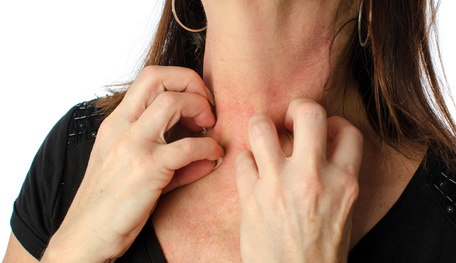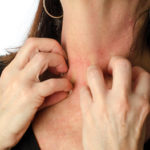 You have been eating a healthy, wholefoods diet for a while now and you have seen some improvement in your health and energy levels. Yet despite this you are still dealing with perplexing and frustrating symptoms..
You have been eating a healthy, wholefoods diet for a while now and you have seen some improvement in your health and energy levels. Yet despite this you are still dealing with perplexing and frustrating symptoms..
You have noticed that after eating certain meals your skin becomes itchy, you break out in hives, you get a headache or acidity. Or perhaps you feel a bit of anxiety, irritability, or nasal congestion, your face gets flushed, your heart rate increases, you may sneeze or feel nauseous..
These are all symptoms that may indicate that you are suffering from histamine intolerance. Let’s have a closer look at what this is, what causes it and what you can do about it.
What is histamine?
Histamine is a chemical that (among other things) is used by the immune system to protect you from illness and infection. When the immune system detects a “foreign invader” such as a bacteria or virus it releases histamine into nearby cells, which causes blood vessels to expand so that white blood cells can come in and neutralize the invader.
We know histamine mostly in relation to allergies, wherein the body mistakes a harmless substance such as pollen for a potential threat and launches the same immune response. Anti-histamine medications may be necessary in this case to stop the allergic reaction.
What is histamine intolerance?
Histamine intolerance is a different issue. It is a relatively common food sensitivity that can be hard to diagnose. It is a result of an imbalance between circulating histamine levels and the body’s inability to break down these high levels. In other words, the amount of histamine in the body exceeds your body’s ability to degrade it.
When I was in the midst of dealing with my health issues one of the things I suffered from was histamine intolerance although I didn’t realize it until long after I healed my gut. My symptoms at the time were a racing heart, hives and an itchy nose, a couple of hours after eating certain meals. These reactions would happen pretty randomly, which made it hard to pin point specific foods.
The main reason that it is so hard to diagnose is that histamine intolerance is like a “bucket problem.” Levels can build up without causing any issues until the bucket is full and the next “drop” of histamine causes it to overflow leading to symptoms.
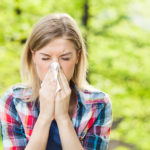 Common histamine intolerance symptoms *:
Common histamine intolerance symptoms *:
- Pruritus (itching especially of the skin, eyes, ears, and nose)
- Urticaria (hives) (sometimes diagnosed as “idiopathic urticaria”)
- Tissue swelling (angioedema) especially of facial and oral tissues and sometimes the throat, the latter causing the feeling of “throat tightening” (sometimes diagnosed as “idiopathic angioedema”)
- Hypotension (drop in blood pressure)
- Hypertension (high blood pressure)
- Tachycardia (increased pulse rate, “heart racing”)
- Symptoms resembling an anxiety or panic attack
- Chest pain
- Nasal congestion and runny nose
- Conjunctivitis (irritated, watery, reddened eyes)
- Some types of headaches that differ from those of migraine
- Fatigue, confusion, irritability
- Very occasionally loss of consciousness usually lasting for only one or two seconds
- Digestive tract upset, especially heartburn, “indigestion”, and reflux
- Nausea and / or vomiting
- Difficulty falling asleep (due to overstimulation)
What causes histamine intolerance?
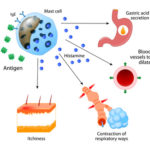 Histamine is broken down in the body by the enzyme Diamine Oxidase (DAO). A deficiency in this enzyme has been found to be the most probable cause of histamine intolerance **. DAO is affected by gastro-intestinal issues, certain kinds of medications such as aspirin, NSAIDS, antibiotics, diuretics and anti-depressants, as well as certain foods (such as alcohol).
Histamine is broken down in the body by the enzyme Diamine Oxidase (DAO). A deficiency in this enzyme has been found to be the most probable cause of histamine intolerance **. DAO is affected by gastro-intestinal issues, certain kinds of medications such as aspirin, NSAIDS, antibiotics, diuretics and anti-depressants, as well as certain foods (such as alcohol).
The second contributing factor is high levels of histamine circulating in the body as a result of:
a) An overgrowth of certain kinds of bacteria in the gut that produce histamine from incompletely digested food (bacterial dysbiosis or histamine producing gut infections)
b) High histamine foods in the diet
c) Small intestinal bacterial overgrowth (SIBO)
d) Hormonal fluctuations
e) Other allergic reactions (histamine levels rise as a result of allergic reactions and may put a person in the symptom range making them more susceptible to high histamine foods).
What can you do if you are suffering from histamine intolerance?
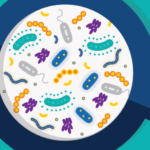 If you suspect that histamine intolerance is an issue for you, you can begin by eliminating foods that are naturally high in histamine while you address the health of your gut and deal with bacterial imbalances and gut infections. The last part is very important, as there are many foods that contain histamine that are otherwise healthy and that you don’t want to have to permanently remove from your diet.
If you suspect that histamine intolerance is an issue for you, you can begin by eliminating foods that are naturally high in histamine while you address the health of your gut and deal with bacterial imbalances and gut infections. The last part is very important, as there are many foods that contain histamine that are otherwise healthy and that you don’t want to have to permanently remove from your diet.
The following foods are considered to be high in histamine levels:
- Fish (Fish have, much like humans, certain bacteria in their gut that can produce histamine. When a fish dies, these bacteria break down tissue proteins releasing the amino acid histidine, which gets converted into histamine. Unless a fish is gutted immediately after it dies, histamine levels can build up rapidly.)
- Shellfish (they are typically not gutted after harvesting which causes them to contain high levels of histamine by the time they are on your plate. In her article Dr. Janice Joneja mentions how many reactions to fish or seafood have been mistakenly attributed to allergies while they were actually the result of high levels of histamine in incorrectly processed fish.)
- Fermented Foods (sauerkraut, kimchi, pickled vegetables, miso, fermented soy including soy sauce, yoghurt, kefir, etc.)
- Processed, smoked and cured meats (luncheon meat, sausage, salami, pepperoni, smoked ham, cured bacon, etc.)
- Left-over meat (bacteria rapidly form histamine levels at room- or refrigerator temperatures)
- Tea (regular or green)
- Chocolate
- Alcoholic beverages of all types
- Processed cheese and fermented cheese (such as cheddar, brie, blue cheese, camembert, etc.)
- Vinegar, nutritional yeast, brewer’s yeast
- Vegetables:
- Tomatoes, tomato sauces, ketchup, soy and soy products
- Spinach
- Red beans
- Eggplant, olives
- Pumpkin
- Avocado
- Pickles, relishes and other food containing vinegar
- Sea vegetables and algae
- Fruits:
- Dried fruits (dates, raisins, prunes, etc.)
- Desiccated, shredded coconut
- Citrus (orange, grapefruit, lemon, lime, etc.)
- Raspberries, strawberries, loganberries, cranberries
- Grapes, apricots, pineapple
note: it is best to eat any kind of fruit just ripe as histamine levels increase with age
- Seasonings:
- Cinnamon
- Cloves
- Chili powder
- Curry powder
- Nutmeg
- Food additives:
- Tartrazine and other artificial food colours
- Preservatives, especially benzoates and sulphites
Natural anti-histamine foods:
Certain foods fight inflammation, may lower histamine levels naturally*** and can therefore be used freely to support a low histamine diet:
- Watercress
- Pea sprouts
- Onions
- Garlic
- Moringa (or malungay in the Philippines)
- Holy basil
- Thyme
- Tarragon
- Chamomile
- Nettle
- Peppermint
- Black cumin seed
- Galangal
- Ginger
- Lotus root
- Turmeric
- Pomegranate
- Apples
- Capers
- Mangosteen
- Peaches
- Black Rice bran
- Mung bean sprouts
Short Chain Fatty Acids (like butyrate) are also believed to inhibit the release of histamine from mast cells. In this article: “What’s Bugging You” you can read more about Short Chain Fatty Acids and how you can use resistant starch as a way to boost levels in your gut.
Building Digestive Health
 While adjusting your diet can help reduce symptoms that occur as a result of histamine intolerance, it is essential to build good gut health. This is what will help you to permanently resolve histamine intolerance issues that occur as a result of gut infections or bacterial dysbiosis. You can read more about my approach to building digestive health here.
While adjusting your diet can help reduce symptoms that occur as a result of histamine intolerance, it is essential to build good gut health. This is what will help you to permanently resolve histamine intolerance issues that occur as a result of gut infections or bacterial dysbiosis. You can read more about my approach to building digestive health here.
![]()
Resources:
* http://www.foodsmatter.com/allergy_intolerance/histamine/articles/histamine_joneja.html
** http://ajcn.nutrition.org/content/85/5/1185.full
*** http://alisonvickery.com.au/anti-histamine-foods/

